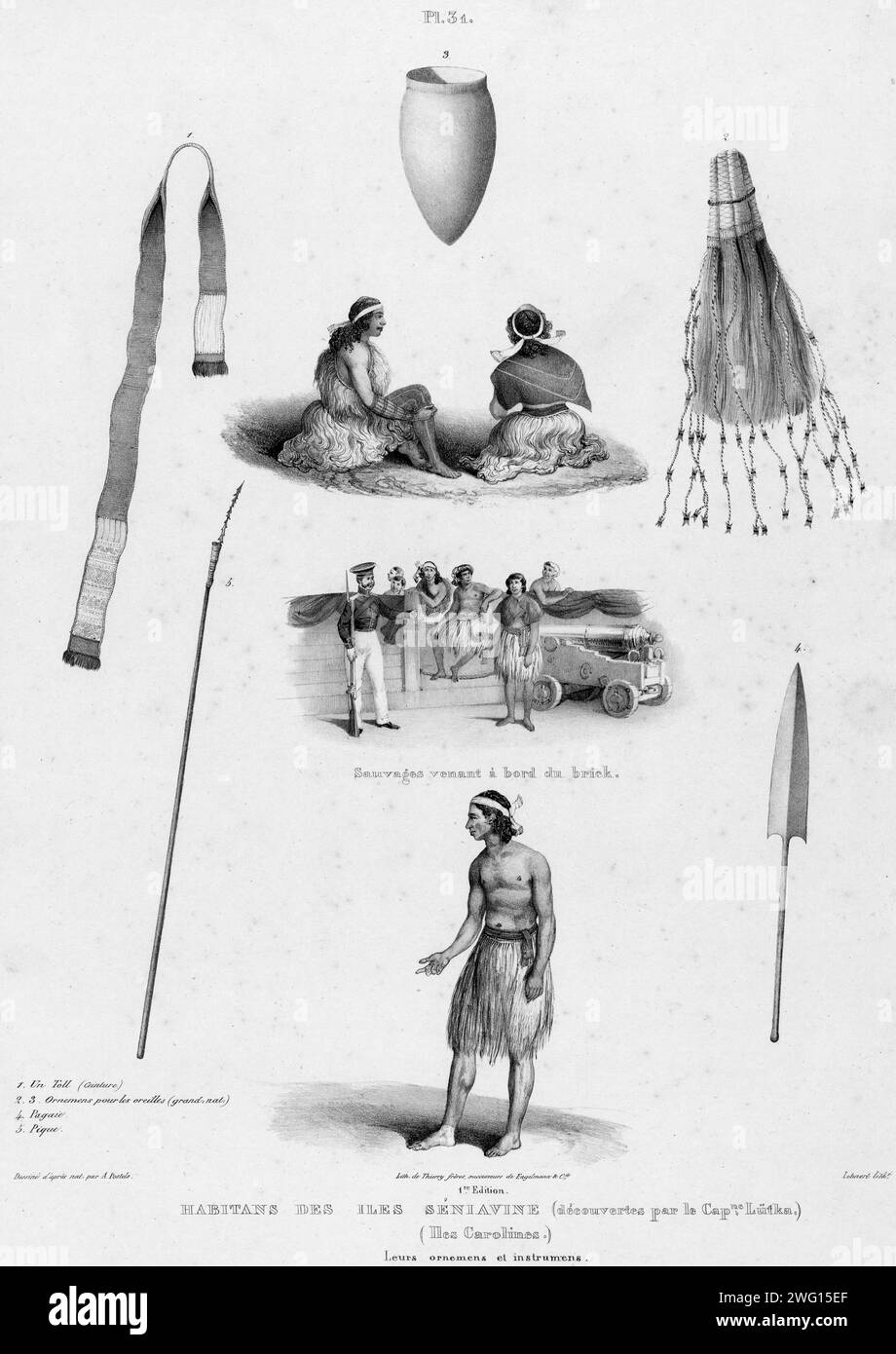Inhabitants of the Seniavine Islands (discovered by Capt Lutka) (Caroline Islands) their ornaments and instruments, 19th century. One of 65 lithographs that were included in the volume of maps published after the round-the-world voyage of the corvette Seniavin commissioned by Tsar Nicholas I and carried out in 1826-29 under the command of Captain Fedor Litke (the Russian version of the name of Count Friedrich Lu¨tke, a Baltic German). The expedition began in Kronstadt (the main imperial Russian naval base near Saint Petersburg where Russian circumnavigations typically began and ended); it

Image details
Contributor:
Heritage Image Partnership Ltd / Alamy Stock PhotoImage ID:
2WG15EFFile size:
59.4 MB (2.5 MB Compressed download)Releases:
Model - no | Property - noDo I need a release?Dimensions:
3835 x 5414 px | 32.5 x 45.8 cm | 12.8 x 18 inches | 300dpiPhotographer:
Heritage ImagesMore information:
This image could have imperfections as it’s either historical or reportage.
Inhabitants of the Seniavine Islands (discovered by Capt Lutka) (Caroline Islands) their ornaments and instruments, 19th century. One of 65 lithographs that were included in the volume of maps published after the round-the-world voyage of the corvette Seniavin commissioned by Tsar Nicholas I and carried out in 1826-29 under the command of Captain Fedor Litke (the Russian version of the name of Count Friedrich Lu¨tke, a Baltic German). The expedition began in Kronstadt (the main imperial Russian naval base near Saint Petersburg where Russian circumnavigations typically began and ended); it then traveled around Cape Horn to the Pacific Ocean. This voyage was one of many Russian scientific naval surveys in the first part of the 19th century.